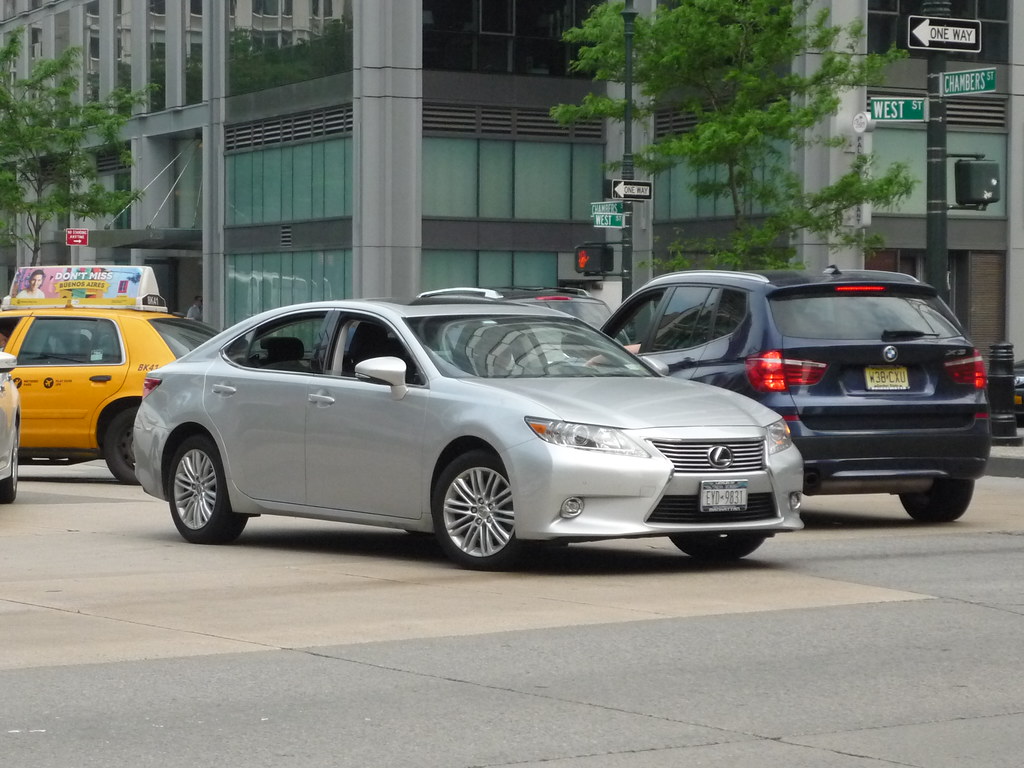When it comes to the complex world of automobiles, one factor rises above all others for many buyers: reliability. It’s not about flashy features, the roar of an engine, or even a plush interior; it’s about the fundamental assurance that your vehicle will get you from point A to point B without a major meltdown. The peace of mind that comes with a dependable ride is truly invaluable. It means no unexpected roadside woes, no grappling with repair bills that feel like a second mortgage, and the quiet confidence that your daily commute or family road trip won’t turn into a mechanical nightmare.
But the journey to finding that elusive long-term dependability can be surprisingly bumpy. For every automotive champion that cruises past the 300,000-mile mark with little more than routine maintenance, there’s another model lurking that makes bold promises but falls spectacularly short. These are the vehicles that look great on paper, perhaps even garnering glowing early reviews, only to reveal catastrophic mechanical or electronic issues down the line. They transform what should be a straightforward ownership experience into a frustrating, costly, and trust-eroding ordeal.
This article is a deep dive into those very vehicles—the ones that, despite their initial appeal or brand legacy, shockingly failed their owners when it mattered most. We’re talking about cars that didn’t just quietly develop a few quirks; they delivered widespread breakdowns, class action lawsuits, and significant damage to brand reputations. So, buckle up as we explore the first half of a list that highlights 14 cars that seriously broke owners’ trust, leaving many to wish they’d simply chosen a different model from the start.

1. **Ford Explorer (Early 2000s Models)**At the turn of the millennium, the Ford Explorer was an undeniable titan, sitting comfortably as one of America’s most beloved family SUVs. It was a fixture in countless driveways, celebrated for its blend of comfort, generous space, and a rugged utility that hinted at adventure. Consumers placed immense trust in the Explorer nameplate, a faith built on its consistent success and solid reputation throughout the 1990s.
However, this perception began to crumble dramatically with the launch of the third-generation Explorer, spanning models from 2002 to 2005. While a structural redesign and new engine options initially appeared to signal progress, beneath the surface, the vehicle’s reliability took a noticeable and disheartening dive. What was meant to be an evolution instead became a period of significant regression in terms of owner satisfaction and long-term dependability.
One of the most persistent and infuriating issues plaguing this generation of the Explorer was its notoriously unreliable transmission. Owners frequently reported severe failures well before the 100,000-mile mark, with some transmissions succumbing to problems as early as 60,000 miles. These weren’t just isolated incidents; the transmission problems became so widespread that they directly contributed to a significant dip in both resale value and overall owner satisfaction. Drivers experienced everything from slipping and delayed shifting to complete transmission failure, necessitating expensive rebuilds or replacements that often cost thousands of dollars. For an SUV marketed as a family-friendly, go-anywhere machine, these issues were far more than just an inconvenience; they were financially and emotionally draining for a wide swath of owners.
Beyond the critical drivetrain problems, the early 2000s Explorer also suffered from a variety of electrical and suspension faults. Many drivers found themselves grappling with repeated issues concerning wheel bearings, tie rods, and the electronic control systems that managed essential features like power windows and door locks. The cumulative effect of these compounding problems truly shocked buyers, who had purchased the Explorer based on its well-established, long-standing reputation for reliability. Ultimately, this once-dependable SUV choice transformed into a stark cautionary tale, illustrating how deeply brand loyalty can be undermined by a single, poorly executed generation of a popular vehicle.
Car Model Information: 2021 Ford Explorer XLT
Name: Ford Explorer
Caption: Sixth-generation Ford Explorer
Manufacturer: Ford Motor Company
Production: 1990–present
ModelYears: 1991–present
Class: unbulleted list
Chassis: unbulleted list
Predecessor: Ford Bronco II
Successor: Ford Territory (Australia)
Categories: 2000s cars, 2010s cars, 2020s cars, All-wheel-drive vehicles, All Wikipedia articles in need of updating
Summary: The Ford Explorer is a range of SUVs manufactured by the Ford Motor Company since the 1991 model year. The first five-door SUV produced by Ford, the Explorer, was introduced as a replacement for the three-door Bronco II. As with the Ford Ranger, the model line derives its name from a trim package previously offered on Ford F-Series pickup trucks. As of 2020, the Explorer became the best-selling SUV in the American market.
Currently in its sixth generation, the Explorer has featured a five-door wagon body style since its 1991 introduction. During the first two generations, the model line included a three-door wagon (directly replacing the Bronco II). The Ford Explorer Sport Trac is a crew-cab mid-size pickup derived from the second-generation Explorer. The fifth and sixth generations of the Explorer have been produced as the Ford Police Interceptor Utility (replacing both the Ford Crown Victoria Police Interceptor and the Ford Police Interceptor Sedan).
The Explorer is slotted between the Ford Edge and Ford Expedition within North America’s current Ford SUV range. The model line has undergone rebadging several times, with Mazda, Mercury, and Lincoln each selling derivative variants. Currently, Lincoln markets a luxury version of the Explorer as the Lincoln Aviator.
For the North American market, the first four generations of the Explorer were produced by Ford at its Louisville Assembly Plant (Louisville, Kentucky) and its now-closed St. Louis Assembly Plant (Hazelwood, Missouri). Ford currently assembles the Explorer alongside the Lincoln Aviator and the Police Interceptor Utility at its Chicago Assembly Plant (Chicago, Illinois).
Get more information about: Ford Explorer
Buying a high-performing used car >>>
Brand: Ford Model: Explorer
Price: $23,931 Mileage: 60,880 mi.
Read more about: 12 SUVs to Steer Clear Of: Critical Insights into Models That Age Poorly and Rack Up Repair Bills
2. **Jeep Liberty (2002–2007)**The Jeep Liberty made its debut in 2002, ostensibly designed to bridge the gap between the famously rugged Cherokee and the more upscale Grand Cherokee. With its distinctive boxy styling, a clear nod to Jeep’s off-road pedigree, and a versatile mid-size profile, the Liberty initially seemed to perfectly hit the sweet spot for both adventurous drivers and those navigating urban landscapes. It was envisioned as a vehicle that would combine Jeep’s legendary capability with the comforts of modern automotive design, promising the best of both worlds.
However, the Liberty quickly developed a reputation not for the durability typically associated with the Jeep brand, but for frequent and frustratingly unpredictable breakdowns. These issues left even the most die-hard Jeep enthusiasts scratching their heads in disbelief. The core components, which were supposed to be its strength, instead became its greatest weaknesses, causing widespread dissatisfaction among owners.
Both the Liberty’s 3.7L V6 engine and its four-speed automatic transmission became common sources of widespread complaints. Owners reported premature timing chain issues, persistent oil sludge buildup, and even catastrophic engine failures with alarming frequency. Even the model’s diesel variant, which initially garnered praise for its impressive torque and towing ability, was soon plagued by turbo failures and a host of complex, emissions-related problems that proved difficult and costly to resolve. Meanwhile, the automatic transmission was notorious for harsh shifts and, more often than not, complete failure, frequently requiring replacement before the 100,000-mile mark. Many owners found themselves staring down massive repair bills for powertrains that simply failed to live up to the durability promise inherent in the Jeep brand.
Adding insult to injury, a plethora of electrical gremlins contributed significantly to the Liberty’s downfall. From faulty window regulators and malfunctioning door locks to erratic dashboard lights and complete instrument cluster malfunctions, the vehicle appeared to suffer from a constant stream of small but persistent annoyances. These issues collectively undermined the entire driving experience and chipped away at owner confidence. These problems weren’t just inconvenient; they actively eroded the trust that buyers had placed in a brand synonymous with rugged reliability. Instead of the tough, go-anywhere vehicle they expected, they received a car that demanded near-constant attention and incredibly costly repairs. By the end of its production run in 2012, the Liberty had squandered the goodwill it started with, becoming more of a cautionary tale in automotive history than a success story for Jeep.
Car Model Information: 2011 Jeep Liberty Limited
Name: Jeep Liberty
Caption: 2008 Jeep Liberty
Manufacturer: Jeep
Aka: Jeep Cherokee
Production: 2001 – August 2012
ModelYears: 2002–2012
Class: Compact SUV
Related: Dodge Nitro,Jeep Commander
Layout: Front-engine, rear-wheel-drive layout,Rear-wheel drive
BodyStyle: SUV
Predecessor: Jeep Cherokee (XJ)
Successor: Jeep Cherokee (KL)
Chassis: Unibody
Assembly: Toledo, Ohio,Cairo,Valencia, Carabobo
Categories: 2010s cars, All-wheel-drive vehicles, Articles with short description, CS1: unfit URL, Cars discontinued in 2012
Summary: The Jeep Liberty is a four door unibody compact SUV manufactured and marketed by Jeep for model years 2002–2012 over two generations, internally designated the KJ (2002–2007) and KK (2008–2012), respectively. Both generations were marketed globally, including as the Jeep Cherokee outside North America.
Introduced as a replacement for the Cherokee (XJ), the Liberty was priced between the Wrangler and Grand Cherokee and was the smallest of the 4-door Jeep SUVs until the car based 4-door Compass and Patriot arrived for 2007. Both generations were assembled at the Toledo North Assembly Plant in the United States and other countries including Egypt and Venezuela. The KK generation was manufactured alongside the closely related Dodge Nitro. Production ended in August 2012.
The Liberty was superseded by the Jeep Cherokee.
Get more information about: Jeep Liberty
Buying a high-performing used car >>>
Brand: Jeep Model: Liberty
Price: $8,468 Mileage: 106,563 mi.
Read more about: Over 78,000 Jeep Wranglers Recalled: What Owners Need to Know About the Latest Safety Alert

3. **Cadillac CTS (2003–2007)**When Cadillac introduced the CTS in 2003, it represented a bold and ambitious attempt to revitalize the brand for a new, younger, and distinctly more performance-oriented market segment. With its sharp, edgy styling, a desirable rear-wheel-drive configuration, and the explicit promise of German-style handling wrapped in American luxury, the CTS was poised to usher in a new era for GM’s prestigious luxury division. It truly made waves with its striking design and engaging driving dynamics, setting a fresh direction for Cadillac’s image.
However, while its design and performance initially captivated, the CTS quickly began to raise eyebrows for all the wrong reasons when it came to its long-term reliability. Owners soon found themselves confronting a litany of serious issues that starkly contradicted the brand’s renewed promise of high-quality refinement and lasting luxury. The initial excitement quickly gave way to widespread frustration as mechanical problems mounted, undermining the very essence of what a Cadillac should represent.
One of the most significant and surprising problems emerged in the form of severe engine and timing chain failures. Early CTS models, particularly those equipped with the 3.6L V6 engine, developed chronic timing chain stretch problems. These issues not only triggered persistent check-engine lights but often necessitated complete timing chain replacements—an incredibly expensive fix, especially for a luxury vehicle. Such a fundamental mechanical failure on a car designed to compete with premium European brands was a profound disappointment for owners expecting a flawless experience.
In addition to the timing chain woes, water pumps and radiators on these CTS models also exhibited an unusually high failure rate, further contributing to the vehicle’s reputation for unreliability. Cadillac did attempt to address some of these recurring issues through service bulletins and the introduction of improved parts. However, for a significant number of owners, these fixes came too late, only after they had already endured major mechanical failures and absorbed substantial repair costs. These unexpected breakdowns caught customers completely off guard, especially those who had invested in a Cadillac expecting the brand name to unequivocally stand for lasting luxury and robust engineering, making the early CTS a surprising letdown in the luxury segment.
Car Model Information: 2009 Cadillac CTS Base
Name: Cadillac CTS
Caption: Second-generation CTS
Manufacturer: General Motors
Production: 2002–2019
ModelYears: 2003–2019
Class: Mid-size,luxury car
Predecessor: Cadillac Catera
Successor: Cadillac CT5
Categories: 2010s cars, All-wheel-drive vehicles, All Wikipedia articles written in American English, All articles with dead external links, All articles with unsourced statements
Summary: The Cadillac CTS is a luxury car, manufactured and marketed by General Motors from 2003 until 2019 across three generations.
Initially available as a 4-door sedan using the GM Sigma platform, GM offered the second generation CTS in 4-door sedan, 2-door coupe, and 5-door sport wagon, and the third generation as a sedan, using a stretched version of the GM Alpha platform. High performance sedan variants were offered for each generation, as the CTS-V—with wagon and coupe variants offered for the second generation.
In a 2003 report titled The 90 days that shaped Cadillac, Automotive News noted that the first generation CTS marked a $4B investment by General Motors to set a new course for Cadillac styling, introduce a new rear-drive platform, and importantly, re-establish the brand’s relevancy.
Wayne Cherry and Kip Wasenko designed the exterior of the first generation CTS, marking the production debut of a design language marketed as “Art and Science,” first used on the Evoq concept car. John Manoogian III directed the second generation CTS design, as initially conceived by Robert Munson. Bob Boniface and Robin Krieg designed the exterior of the third generation CTS.
The CTS ended production in 2019 and was replaced by the CT5, which shared its platform with the third and final generation of the CTS in addition to the smaller CT4.
Get more information about: Cadillac CTS
Buying a high-performing used car >>>
Brand: Cadillac Model: CTS
Price: $11,000 Mileage: 79,973 mi.
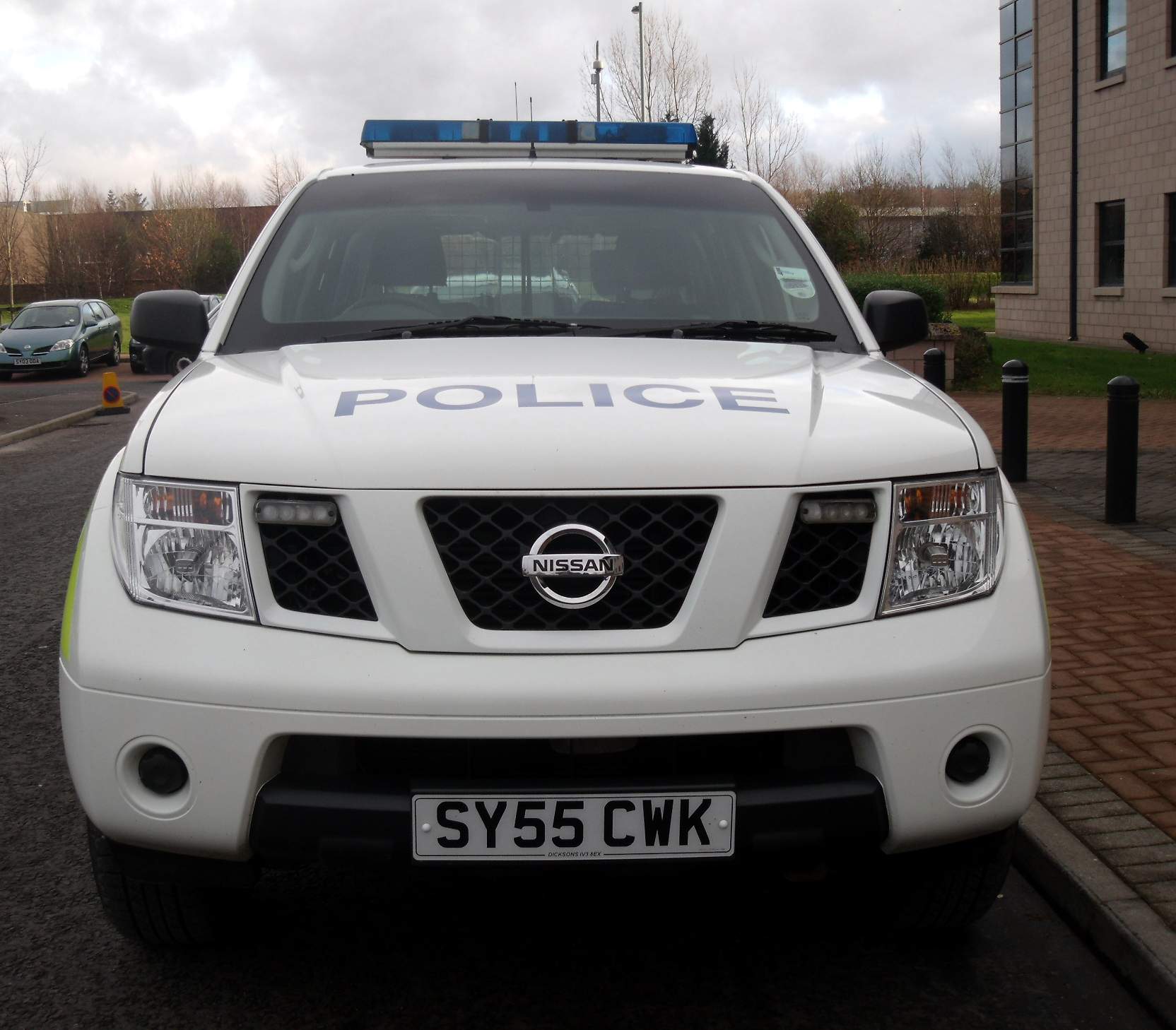
4. **Nissan Pathfinder (2005–2012)**The Nissan Pathfinder had long cultivated a strong reputation as a dependable, rugged SUV, a go-to choice for families and adventurers alike. However, with the introduction of its third generation, known as the R51, from 2005 to 2012, Nissan’s midsize contender stumbled badly. On paper, this Pathfinder iteration boasted all the right features: a robust body-on-frame construction promising off-road durability, a strong V6 engine, and even spacious third-row seating, making it an appealing package for many potential buyers.
Unfortunately, what buyers ultimately received was a vehicle plagued by a series of serious and incredibly costly mechanical failures that surfaced with alarming regularity. The dream of a reliable family SUV quickly turned into a nightmare of unexpected repairs and significant financial burdens. This generation of the Pathfinder became notorious for issues that were both widespread and deeply impactful for its owners.
Perhaps the most infamous issue involved a critical coolant leak that could contaminate the transmission, a design flaw grimly referred to by owners as the “strawberry milkshake of death.” This catastrophic scenario occurred when coolant from the radiator would mix with the transmission fluid due to a failed internal seal. The inevitable and devastating result? Complete transmission failure, which typically manifested between 80,000 and 120,000 miles. Replacing both the transmission and the radiator to fix this problem usually cost between $4,000 and $6,000, representing a truly devastating expense for many owners who had envisioned the Pathfinder as a long-term, reliable investment.
But the transmission issue wasn’t the Pathfinder’s only Achilles’ heel. Owners also reported frequent failure points with timing chain tensioners, fuel level sensors, and engine mounts, creating a laundry list of recurring problems. These breakdowns weren’t just isolated incidents; they were widespread and systemic, ultimately prompting class action lawsuits and extensive, frustrated discussions on owner forums across the internet. For a brand like Nissan, which had meticulously built trust through the reliability of models like the Altima and Maxima, the Pathfinder’s dramatic collapse into unreliability came as a profound and damaging surprise. Many buyers who chose it for essential family duties or weekend adventures found themselves deeply let down by a vehicle that simply couldn’t go the distance as promised.
Car Model Information: 2023 Nissan Pathfinder SL
Name: Nissan Pathfinder
Caption: 2022 Nissan Pathfinder Platinum 4WD (R53, US)
Manufacturer: Nissan
Production: 1985–present
ModelYears: unbulleted list
Layout: unbulleted list
Class: unbulleted list
Chassis: unbulleted list
Predecessor: unbulleted list
Successor: unbulleted list
Categories: 1990s cars, 2000s cars, 2010s cars, 2020s cars, All-wheel-drive vehicles
Summary: The Nissan Pathfinder is a range of sport utility vehicles manufactured by Nissan since 1985. Until the third-generation model, the Pathfinder is based on Nissan’s compact pickup truck platform which it shares with the Navara/Frontier.
The Pathfinder was marketed as the Nissan Terrano (Japanese: 日産・テラノ, Hepburn: Nissan Terano) outside North America. Beginning in 2004, the vehicles were marketed globally as the Pathfinder.
In 2012, the R52 series Pathfinder was released as a three-row crossover SUV based on the unibody Nissan D platform, moving away from the body-on-frame chassis format. The role of a mid-size body-on-frame SUV in Nissan’s global lineup was passed to the Terra/X-Terra, which was released in 2018 and based on the D23 series Navara.
Get more information about: Nissan Pathfinder
Buying a high-performing used car >>>
Brand: Nissan Model: Pathfinder
Price: $32,775 Mileage: 18,055 mi.

5. **Mini Cooper (Early 2000s Models)**The highly anticipated rebirth of the Mini Cooper in the early 2000s was met with widespread excitement and incredibly high expectations. With its instantly recognizable, iconic styling, the backing of BMW’s engineering prowess, and the promise of its famously fun-to-drive handling, the Mini quickly carved out a niche for itself. It became a firm favorite among stylish city dwellers and automotive enthusiasts who were searching for something nimble, chic, and distinctly European in character. The initial reception suggested a runaway success, a perfect blend of heritage and modern mechanics.
However, what began as a stylish and celebrated revival unfortunately soon unraveled into a series of mechanical nightmares for a significant number of owners. Despite its German engineering roots and the high hopes placed upon it, the early Mini Cooper proved to be far from bulletproof; in many documented cases, it was astonishingly unreliable. The charming exterior often masked a core of frequent and frustrating mechanical vulnerabilities that baffled and angered its dedicated fanbase.
One of the most notorious issues involved the timing chain tensioner, a critical component, particularly in the 1.6L engines found in both the base and S models. A faulty design in this part led to chain slack, which produced an unsettling noise and, if left unaddressed, eventually resulted in complete engine failure. For such a compact car, lauded for its sporty image and precision engineering, such a fundamental and critical failure was deeply disappointing and profoundly expensive for affected owners. This wasn’t a minor glitch but a major systemic flaw that spoke volumes about the car’s underlying reliability problems.
Adding to these significant engine issues, common problems included frequent power steering pump failures, persistent water pump leaks, and cracks in the thermostat housing, all contributing to a vehicle that frequently left owners stranded or burdened with exceptionally high repair bills. To compound matters, electrical issues often represented the final nail in the coffin for many owners. Failing window regulators, baffling dashboard lighting glitches, and malfunctioning keyless entry systems all contributed to a profoundly frustrating ownership experience. Repairs for these multifaceted problems were not only expensive but often required specialized tools and intricate knowledge, meaning many owners felt they had no choice but to go through Mini or BMW service departments, where costs quickly accumulated. For a car that was supposed to embody cute, compact, and carefree motoring, the early Mini Cooper shocked its owners with how frequently and dramatically it broke down, leaving a trail of broken trust in its wake.
Car Model Information: 2023 MINI Hardtop Cooper
Sp: uk
Caption: 1959 Morris Mini-Minor (first one built)
Name: Mini
Aka: Austin 850,Rover Mini,Austin Cooper,Austin Mini,Austin Partner,Austin Seven,Innocenti Mini,Leyland Mini,Morris 850,Morris Mascot,Morris Mini Minor,Riley Elf,Wolseley 1000 (South Africa),Wolseley Hornet
Layout: Front-engine, front-wheel-drive layout
Manufacturer: British Motor Corporation,British Leyland,Rover Group
Production: 1959–2000 (5.38 million)
Class: City car
BodyStyle: sedan (car),convertible,Station wagon,sedan delivery,coupe utility
Engine: BMC A-series engine,Straight-four engine
Designer: Alec Issigonis,John Sheppard (car designer)
Transmission: 4-speed manual,AP automatic transmission,5-speed manual (optional extra on some later models)
Length: cvt,cvt,cvt
Width: cvt
Height: cvt
Weight: cvt
Wheelbase: cvt,cvt
Related: Mini Moke,Austin Metro,Innocenti Mini,Mini Wildgoose,Mini Marcos
Successor: Austin Metro,Mini Hatch
Assembly: Panmure, New Zealand
Categories: 1960s cars, 1970s cars, 1980s cars, 1990s cars, 2000s cars
Summary: The Mini is a very small two-door, four-seat car, produced for four decades over a single generation, with many names and variants, by the British Motor Corporation (BMC) and its successors British Leyland and the Rover Group, and finally (briefly) under BMW ownership. Minis were built as fastbacks, estates, convertibles, and various other body styles. Minus a brief 1990s hiatus, from 1959 into 2000, an estimated 5.38 million of all variations combined were built, and the Mini’s engines also powered another 2 million Mini Metros, though the Mini eventually outlasted its successor.
Initially, the Mini was marketed under the Austin and Morris names, as the Austin Seven and Morris Mini-Minor; the Austin Seven was renamed Austin Mini in 1962 and Mini became a marque in its own right in 1969. Retrospectively, the car is known as the “Classic Mini” to distinguish it from the modern MINI family of vehicles produced since 2001 by German carmaker BMW, who took ownership of the Mini name following the sale of Rover Group in 2000.
This distinctive two-door car was designed for BMC by Sir Alec Issigonis. Its space-saving transverse engine and front-wheel drive layout – allowing 80% of the area of the car’s floorpan to be used for passengers and luggage – influenced a generation of car makers. The front-wheel-drive, transverse-engine layout were used in many other “supermini” style car designs such as Honda N360 (1967), Nissan Cherry (1970), and Fiat 127 (1971). The layout was also adapted for larger subcompact designs. In 1999, the Mini was voted the second-most influential car of the 20th century, behind the Ford Model T, and ahead of the Citroën DS and Volkswagen Beetle. It is also considered an icon of 1960s British popular culture.
The Mini Mark I had three major UK updates: the Mark II, the Clubman, and the Mark III. Within these was a series of variations, including an estate car, a pick-up, a van, and the Mini Moke, a jeep-like buggy. The performance versions, the Mini Cooper and Cooper “S”, were successful as both race and rally cars, winning the Monte Carlo Rally in 1964, 1965, and 1967. The Mini was manufactured in England at the Longbridge plant in Birmingham located next to BMC’s headquarters and at the former Morris Motors plant at Cowley, as well as in Australia (Victoria Park/Zetland BMC Australia factory) and later also in Spain (Authi), Belgium, Italy (Innocenti, as the Innocenti Mini), Chile, Malta, Portugal, South Africa, Uruguay, Venezuela, and Yugoslavia (IMV). In 1980, British Leyland launched the Mini’s follow-up, the Austin Metro, however the Mini outlasted it and continued to be produced at Longbridge until October 2000.
Get more information about: Mini
Buying a high-performing used car >>>
Brand: Mini Model: Cooper
Price: $26,499 Mileage: 16,186 mi.
Read more about: Future Fortunes on Four Wheels: 14 Classic Cars You Need to Buy Now Before Their Value Explodes
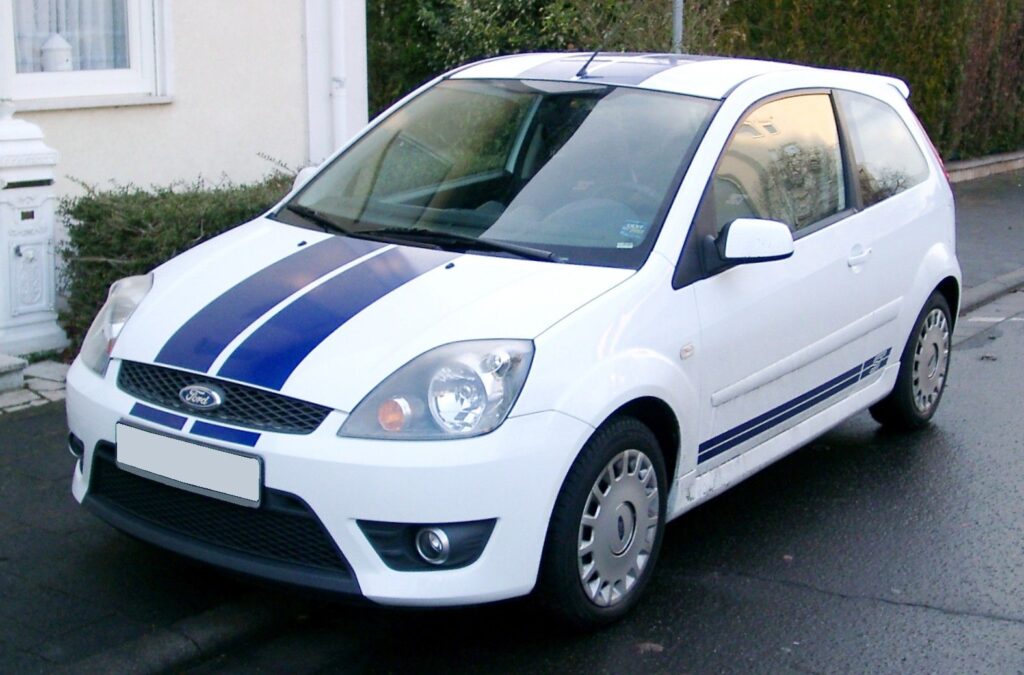
6. **Ford Fiesta (2011-2019)**Ford, as a brand, has carved out a complex reputation in the automotive world. While it’s undeniably known for producing some truly great trucks that stand the test of time, its car lineup often leaves a lot to be desired in terms of long-term reliability. The Ford Fiesta, particularly models produced between 2011 and 2019, regrettably falls squarely into this latter category. Despite its appealing compact size and seemingly economical purchase price, the Fiesta quickly became infamous for a suite of issues that profoundly broke the trust of its owners.
At the heart of the Fiesta’s problems were its infamous transmission issues, which proved to be both widespread and incredibly costly to fix. Many owners reported significant problems specifically with the PowerShift automatic transmission. This advanced transmission system was designed to offer efficiency and smooth shifts but instead became a source of constant frustration, frequently exhibiting jerky shifts, noticeable hesitation, and, in far too many cases, complete and catastrophic failure. These transmission-related failures weren’t just inconvenient; they often led to repeated and expensive trips to the mechanic, draining owners’ wallets and their patience.
Beyond the well-documented transmission woes, the Ford Fiesta was also known to suffer from a range of other debilitating mechanical and electrical issues that could lead to unexpected breakdowns. Engine problems, though less talked about than the transmission, also cropped up with enough regularity to cause concern, often requiring significant diagnostic work and costly repairs. Electrical gremlins, too, contributed to a frustrating ownership experience, manifesting in unpredictable ways that could affect various vehicle systems. This accumulation of issues transformed the Fiesta from a seemingly smart, economical choice into a significant source of stress and financial burden for many of its drivers.
Car Model Information: 2016 Ford Fiesta SE
Name: Ford Fiesta
Manufacturer: Ford Motor Company
Production: June 1976 – July 2023
Class: Supermini
BodyStyle: hatchback
Layout: Front-engine, front-wheel-drive layout
Successor: Ford Puma (crossover)
ModelYears: 1978–1980, 2011–2019 (North America)
Categories: 1980s cars, 1990s cars, 2000s cars, 2010s cars, 2020s cars
Summary: The Ford Fiesta is a supermini car that was marketed by Ford from 1976 to 2023 over seven generations. Over the years, the Fiesta has mainly been developed and manufactured by Ford’s European operations, and had been positioned below the Escort (later the Focus).
Ford had sold over 15 million Fiestas from 1976 to July 2011, making it one of the best-selling Ford nameplates behind the Escort and the F-Series. It has been manufactured in the United Kingdom, Germany, Spain, Brazil, Argentina, Venezuela, Mexico, Taiwan, China, India, Thailand, and South Africa.
The Fiesta was discontinued in 2023, after over 22 million units had been made. The final Ford Fiesta rolled off the production line on 7 July 2023.
Get more information about: Ford Fiesta
Buying a high-performing used car >>>
Brand: Ford Model: Fiesta
Price: $9,995 Mileage: 12,582 mi.
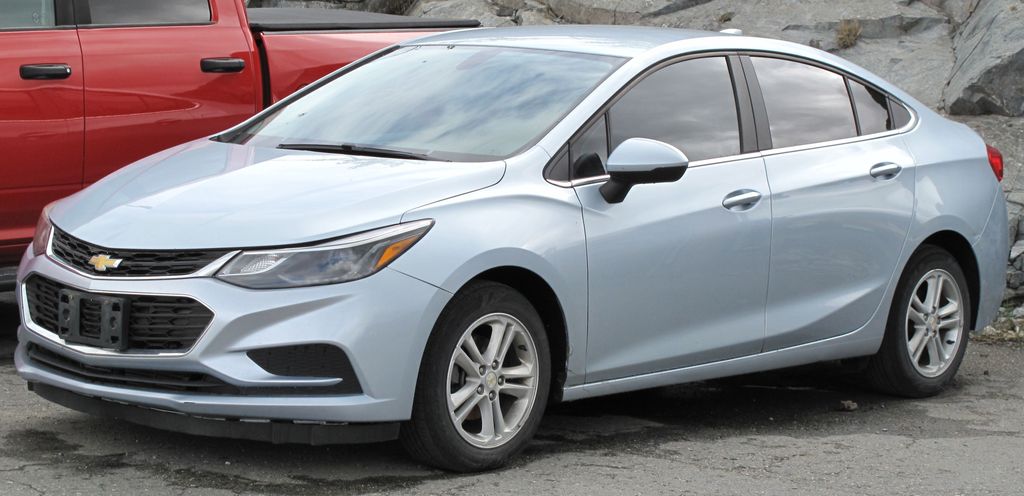
7. **Chevrolet Cruze (2011-2015)**The Chevrolet Cruze, particularly the models released between 2011 and 2015, quickly gained popularity for its attractive blend of fuel efficiency and a surprisingly comfortable ride, making it a compelling option in the compact sedan market. It offered a modern aesthetic and a practical package that appealed to a wide demographic, from first-time buyers to those seeking an economical daily driver. However, beneath its appealing exterior and promising initial performance, the Cruze harbored a host of mechanical issues that inevitably led to a frustrating and costly ownership experience for many.
One of the most frequently reported problems by owners centered on the turbocharged engine, a key feature designed to enhance both power and efficiency. Unfortunately, this engine proved prone to several significant flaws, including persistent coolant leaks that could, if left unaddressed, lead to more serious damage. Moreover, owners consistently reported that the timing belt, a crucial engine component, often needed to be replaced prematurely, a repair that is both labor-intensive and expensive. These engine-related issues chipped away at the car’s perceived value and added unexpected costs to the ownership.
The Cruze also became notorious for a variety of electrical issues that compromised the driving experience and the vehicle’s reliability. These problems often manifested in critical areas such as the power steering system, leading to unexpected stiffness or loss of assist, which could be a significant safety concern. Additionally, malfunctions in dashboard components and infotainment systems were common, causing persistent annoyances and dimming the shine of the car’s modern features. The cumulative effect of these engine and electrical problems firmly cemented the Chevrolet Cruze’s reputation for constant breakdowns. For many owners, what began as a sensible purchase quickly spiraled into a continuous cycle of repairs, easily leading to hefty repair costs that far outweighed the initial savings on the car itself. It was a clear case of a popular model failing to deliver on the fundamental promise of consistent, hassle-free reliability.
Continuing our journey through the cars that truly tested their owners’ patience and wallets, we now pivot to another set of vehicles. These models, despite their initial allure or brand heritage, ultimately delivered widespread breakdowns and a disappointing ownership experience. They underscore the profound impact recurring mechanical and electrical faults can have, not just on drivers, but on the long-term reputation of major automotive brands.
Car Model Information: 2014 Chevrolet Cruze 1LT
Name: Chevrolet Cruze
Caption: 2017 Chevrolet Cruze LT sedan
Manufacturer: General Motors
Aka: unbulleted list
Production: unbulleted list
ModelYears: 2011–2019 (North America),2026 (Middle East)
Class: Compact car
Layout: Front-engine, front-wheel drive
Predecessor: unbulleted list
Successor: unbulleted list
Categories: 2010s cars, 2020s cars, ANCAP small family cars, All articles containing potentially dated statements, All articles with dead external links
Summary: The Chevrolet Cruze is a compact car produced by General Motors from 2008 through 2023. It was designated as a globally developed, designed, and manufactured four-door compact sedan, complemented by a five-door hatchback body variant from 2011, and a station wagon in 2012. The Cruze replaced several compact models, including the Chevrolet Optra which was sold internationally under various names, the Chevrolet Cobalt sold exclusively in North America, and the Australasian-market Holden Astra.
The Cruze was released in 2008 for the South Korean market as the Daewoo Lacetti Premiere prior to the adoption of its international name in 2011, when the Daewoo brand was discontinued. In Australasia, the model was sold between 2009 and 2016 as the Holden Cruze. In 2016, the Cruze sedan was restyled and renamed for the Australasian market as the Holden Astra Sedan, as a sedan complement to the Holden Astra family.
Due to the market shift towards SUVs and decreasing sales, the Cruze has been gradually phased out. Production of the Cruze in South Korea ended in 2018 as part of restructuring of GM Korea, which in turn ceased supply of the Holden Astra Sedan to Australasia. In the United States and Mexico, production ended in 2019, while production in China ended in 2020. Production continued in Argentina until 2023. It was replaced by the Monza in China, which is known as the Cavalier in Mexico.
In 2025, the Cruze was revived as a rebadged Chevrolet Monza for the Middle East.
Previously, the nameplate has been used for a version of a subcompact hatchback car produced under a joint venture with Suzuki from 2001 to 2007, and was based on the Suzuki Ignis.
Get more information about: Chevrolet Cruze
Buying a high-performing used car >>>
Brand: Chevrolet Model: Cruze
Price: $7,900 Mileage: 88,975 mi.
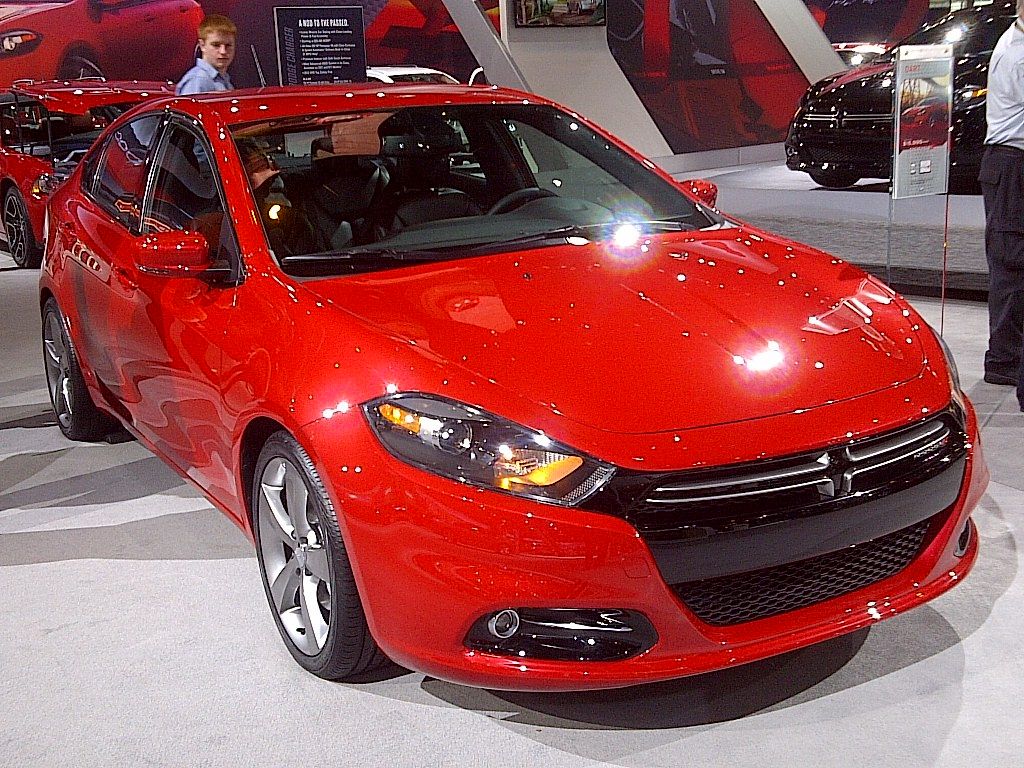
8. **Dodge Dart (2013-2016)**The Dodge Dart, upon its introduction, made a strong visual statement with its sleek design and an appealing price point. It represented an attempt by Dodge to capture the compact sedan market, with many buyers drawn to its contemporary looks hoping for a blend of practicality and flair.
However, beneath its attractive exterior, the Dart quickly began to struggle with a litany of mechanical issues. Among the most commonly reported problems were widespread transmission failures, which could manifest as rough shifts or complete incapacitation. Owners also frequently encountered engine stalling unexpectedly, turning routine drives into nerve-wracking experiences.
Beyond powertrain problems, the Dart also proved to be a source of persistent electrical issues. These malfunctions were not merely inconvenient; in many cases, they were severe enough to render the car unusable, leaving drivers stranded. Such fundamental failures in a relatively new vehicle significantly eroded owner confidence and trust.
To compound matters, the Dodge Dart was notorious for exhibiting premature tire wear, adding unexpected expenses. Furthermore, many owners faced problems with the car’s suspension system, necessitating costly repairs that chipped away at the perceived value. For a car that promised modern reliability, the Dart sadly delivered a constant stream of headaches.
Car Model Information: 1972 Dodge Dart Swinger
Name: Dodge Dart
Caption: 1966 Dodge Dart GT 2-door hardtop
Manufacturer: Dodge
Production: 1959–1976 (US market)
1969-1981 (Brazil)
AlternativeName: Charger (Brazil)
ModelYears: 1960–1976 (US market)
1970-1981 (Brazil)
Class: Full-size
Layout: FR layout
Predecessor: Dodge Coronet#Fourth generation (1957–1959)
Related: Plymouth Valiant,Chrysler Valiant,Dodge Phoenix
Successor: Dodge Aspen,Dodge Diplomat,Talbot Tagora
Categories: 1970s cars, All articles with unsourced statements, Articles with short description, Articles with unsourced statements from December 2023, Articles with unsourced statements from May 2025
Summary: The Dodge Dart is a line of passenger cars produced by Dodge from the 1959 to 1976 model years in North America, with production extended to later years in various other markets.
The production Dodge Dart was introduced as a lower-priced full-size model in 1960 and 1961, but became a mid-size car for one model year for 1962, and was then reduced to a compact for two generations, from 1963 to 1976.
Chrysler had first used ‘Dart’ name plates on two Italian styled show cars, in 1956 and 1957, before it became a Dodge model name. The Dart nameplate was resurrected for a Fiat-derived compact car that was introduced in 2012.
Get more information about: Dodge Dart
Buying a high-performing used car >>>
Brand: Dodge Model: Dart
Price: $18,900 Mileage: 40,424 mi.
Read more about: Dodge’s Commercial Failures: 18 Cars That Flopped

9. **Nissan Juke (2011-2017)**The Nissan Juke certainly stood out with its uniquely quirky looks and distinctive design, carving out a niche in the compact SUV market. Its bold aesthetic and promise of a nimble, urban-friendly ride initially appealed to drivers looking for something different and expressive.
Unfortunately, the Juke’s novel appearance often overshadowed its underlying issues of underwhelming reliability and costly repairs. Owners frequently reported problems with problematic turbochargers, leading to performance degradation and expensive fixes.
At the heart of many complaints were transmission failures, particularly concerning the continuously variable transmission (CVT) that was a key feature. This system, intended for efficiency, often failed prematurely, leaving owners grappling with steep repair bills for a fundamental component.
Adding to the mechanical woes, the Nissan Juke was prone to various electrical malfunctions, further detracting from the ownership experience. Engine oil leaks were also a common issue, with the potential to cause serious engine damage over time if unaddressed.
Car Model Information: 2016 Nissan Juke S
Name: Nissan Juke
Caption: Nissan Juke (F16)
Manufacturer: Nissan
Production: 2010–present
Class: Subcompact crossover SUV
BodyStyle: Sport utility vehicle
Layout: Front-engine, front-wheel-drive layout,Front-engine, four-wheel-drive layout
Categories: 2020s cars, All-wheel-drive vehicles, All articles with unsourced statements, Articles containing Japanese-language text, Articles with short description
Summary: The Nissan Juke (Japanese: 日産・ジューク, Hepburn: Nissan Jūku) is a subcompact crossover SUV (B-segment) produced by the Japanese car manufacturer Nissan since 2010. Debuted as a production vehicle at the 2010 Geneva Motor Show in March, it was introduced to North America at the 2010 New York International Auto Show to be sold for the 2011 model year as the smallest crossover in Nissan’s lineup prior to the introduction of Magnite in 2020.
The second-generation model was revealed for the European market in September 2019, offering larger dimensions by utilising the newer Renault–Nissan CMF-B platform. The second generation marks the withdrawal of the model from most markets outside Europe and Australasia to make way for the Nissan Kicks.
The name “juke” means to “dance or change directions demonstrating agility”, and is also derived from the word “jukebox”.
Get more information about: Nissan Juke
Buying a high-performing used car >>>
Brand: Nissan Model: Juke
Price: $10,987 Mileage: 82,060 mi.
Read more about: The 37 Ugliest Cars Ever Made: Automotive Design Fails
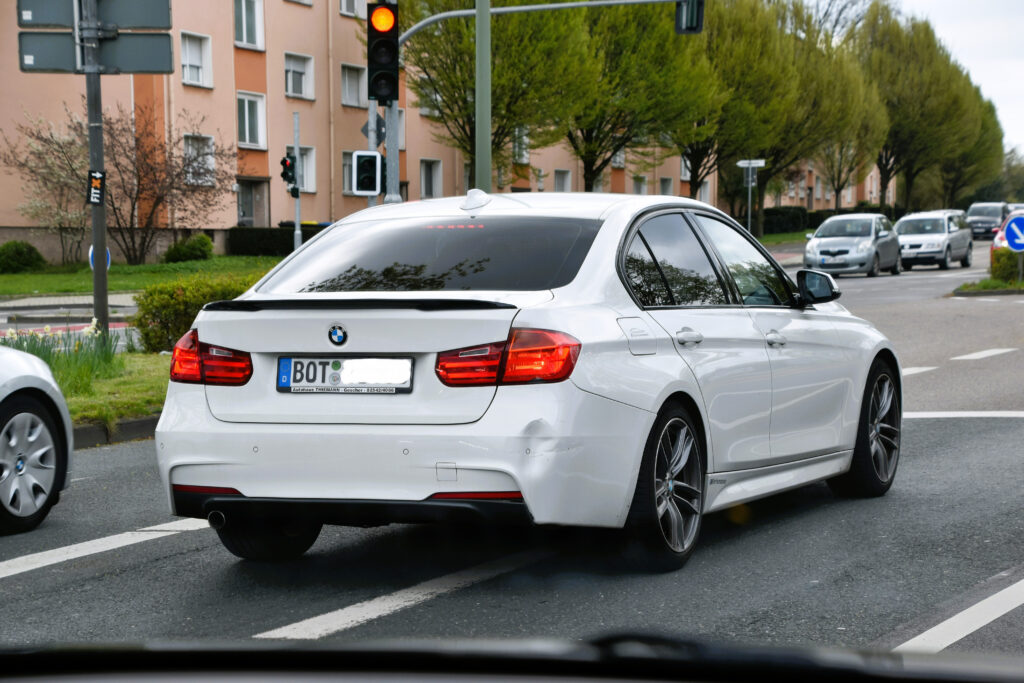
10. **BMW 3 Series (2006-2012)**The BMW 3 Series has long been synonymous with exceptional driving performance and luxurious refinement. Models from 2006 to 2012, while celebrated for dynamics, paradoxically earned a reputation for costly repairs and surprisingly poor reliability for a car of its caliber.
Owners frequently grappled with persistent and frequent oil leaks, indicating deeper engine or seal issues. The suspension components also proved problematic, leading to discomfort and compromised handling.
High-performance engines, while providing exhilarating power, were unfortunately prone to their own set of significant issues. Many drivers reported turbocharging problems that severely impacted output and required complex and costly repairs. Premature wear of critical engine components also became a recurring theme.
The cooling system in these 3 Series models exhibited a notable tendency to fail, leading to severe engine overheating and potentially catastrophic damage. Electrical malfunctions further contributed to a frustrating ownership experience, far from the hassle-free luxury anticipated.
Car Model Information: 2024 Honda Civic Sport
Name: BMW 3 Series
Manufacturer: BMW
Production: 1975–present
Class: Compact executive car
Predecessor: BMW 02 Series
Categories: 1970s cars, 1980s cars, 1990s cars, 2000s cars, 2010s cars
Summary: The BMW 3 series is a line of compact executive cars manufactured by the German automaker BMW since May 1975. It is the successor to the 02 series and has been produced in seven generations.
The first generation of the 3 Series was only available as a 2-door saloon; the model range expanded to include a 4-door saloon, 2-door convertible, 2-door coupé, 5-door estate, 5-door liftback (“Gran Turismo”; discontinued in 2019) and 3-door hatchback body styles. Since 2013, the coupé and convertible models have been marketed as the 4 Series; these styles no longer being included in the 3 Series.
The 3 Series is BMW’s best-selling model line, accounting for around 30% of the BMW brand’s annual total car sales, and has won numerous awards throughout its history. The M version of the 3 series, M3, debuted with the E30 M3 in 1986.
Get more information about: BMW 3 Series
Buying a high-performing used car >>>
Brand: BMW Model: 3 Series
Price: $25,950 Mileage: 29,727 mi.

11. **Jeep Cherokee (2014-2017)**The Jeep Cherokee, particularly models from 2014 to 2017, promised a compelling blend of rugged appeal and the brand’s renowned off-road capabilities. It presented itself as a versatile SUV, equally at home on city streets and challenging terrains.
However, ownership often diverged sharply from this promise. The Cherokee frequently fell short in reliability, with many owners reporting persistent issues with the engine, especially the 2.4-liter Tigershark. These included significant oil consumption and premature engine failures.
Beyond the engine, the transmission also developed a reputation for being problematic. Drivers frequently experienced rough shifting, leading to an uncomfortable and unreliable driving experience, and in severe cases, complete transmission breakdowns.
Adding to the list of woes were common electrical issues, especially with the infotainment system and various sensors. These malfunctions created a persistently annoying and ultimately unreliable driving environment, transforming the Cherokee into a vehicle frequently demanding costly attention.
Car Model Information: 2022 Jeep Grand Cherokee Limited X
Name: Jeep Cherokee
Caption: Fifth generation (KL)
Manufacturer: Jeep
Aka: Jeep Liberty
ModelYears: unbulleted list
Class: unbulleted list
Layout: unbulleted list
Chassis: unbulleted list
Categories: All-wheel-drive vehicles, Anti-Indigenous racism in the United States, Articles with short description, Compact sport utility vehicles, Crossover sport utility vehicles
Summary: The Jeep Cherokee is a line of sport utility vehicles (SUV) manufactured and marketed by Jeep over six generations. Marketed initially as a variant of the Jeep Wagoneer (SJ), the Cherokee has evolved from a full-size station wagon (before the SUV description came into use) to one of the first compact SUVs and into its latest generation as a crossover SUV.
Named after the Cherokee tribe of Native Americans in the United States, Jeep has used the nameplate in some capacity since late 1973 when American Motors Corporation (AMC) introduced the 1974 model year line.
Production of the Cherokee ended in February 2023. The Cherokee nameplate has since been used by the Grand Cherokee and its extended version, the Grand Cherokee L.
Get more information about: Jeep Cherokee
Buying a high-performing used car >>>
Brand: Jeep Model: Cherokee
Price: $28,988 Mileage: 52,000 mi.
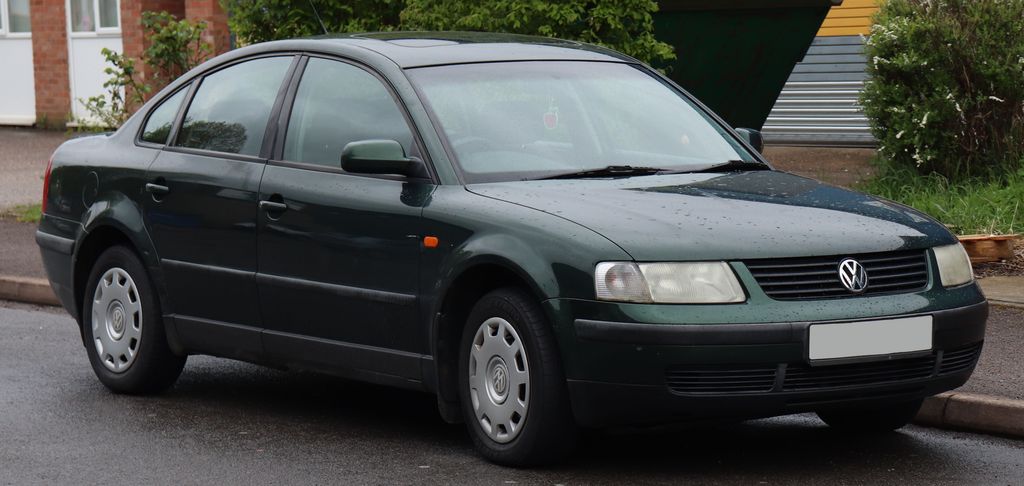
12. **Volkswagen Passat (2012-2015)**The Volkswagen Passat (2012-2015) aimed to offer an upscale feel and a solid driving experience, positioning itself as a refined choice. Its European styling and comfortable interior initially drew in buyers expecting German engineering precision and long-term dependability.
Regrettably, this generation was plagued by mechanical issues that undermined its perceived quality. Owners commonly reported problems with the turbocharged engines, including premature timing belt failures and persistent coolant leaks.
The Passat also became known for suffering from widespread electrical system malfunctions. These could impact critical areas such as the dashboard, essential sensors, and even the braking system. Such unpredictable faults eroded driver confidence and necessitated expensive repairs.
Furthermore, there were numerous reports of transmission problems, from erratic shifting to complete failures. The accumulation of these engine, electrical, and transmission issues meant the Passat frequently devolved into a source of frustration and substantial financial drain.
Car Model Information: 2022 Volkswagen Passat 2.0T SE
Name: Volkswagen Passat
Caption: Passat B9
Manufacturer: Volkswagen
Aka: Volkswagen Dasher,Volkswagen Quantum,Volkswagen Santana,Volkswagen Corsar,Volkswagen Magotan (China),Volkswagen Carat
Production: 1973–present
Class: Mid-size car
Layout: Front-engine, front-wheel-drive layout
Predecessor: Volkswagen Type 4,Volkswagen Type 3,Volkswagen K70
Successor: Volkswagen ID.7
Sp: uk
Categories: 1970s cars, 1980s cars, 1990s cars, 2000s cars, 2010s cars
Summary: The Volkswagen Passat is a nameplate of large family cars (D-segment) manufactured and marketed by the German automobile manufacturer Volkswagen since 1973 and also marketed variously as the Dasher, Santana, Quantum, Magotan, Corsar and Carat — in saloon, estate, and hatchback body styles.
A “four-door coupé” variant of the Passat with a lower roof was released in the North American market in 2008 as the Passat CC, which was then renamed to Volkswagen CC. The CC was succeeded by the Arteon in 2017.
In January 2011, Volkswagen introduced a separate Passat model line, internally designated “Volkswagen New Midsize Sedan” or NMS, that was manufactured in the US at the Chattanooga assembly plant and in China at Nanjing by SAIC-Volkswagen. Developed to increase Volkswagen sales in North America, the Passat NMS is larger and costs less to produce, and is sold in the North America, South Korea, China, and Middle East. The separate B8 Passat model entered production in Europe in 2014, based on the MQB platform.
In 2019, the Passat NMS program was split into two as the North American one continued being produced on an older platform while the Chinese Passat moved on to the MQB platform, which resulted in Volkswagen marketing three models under the Passat nameplate globally at that time. The North American Passat was discontinued after the 2022 model year.
Volkswagen ended the production of the saloon Passat for the European market in 2022. The B9 Passat, released in 2023, is only available in an estate body style. The Passat continues to be available as a saloon in China.
The “Passat” is one of several Volkswagen models named after a wind: “Passat” is the usual German word for “Trade winds”.
Get more information about: Volkswagen Passat
Buying a high-performing used car >>>
Brand: Volkswagen Model: Passat
Price: $16,994 Mileage: 76,970 mi.
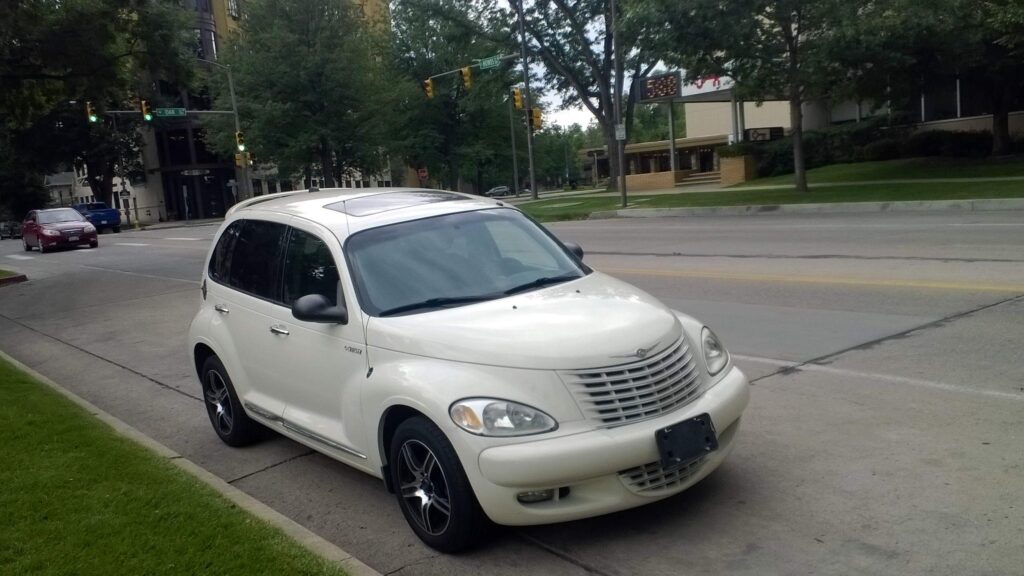
13. **Chrysler 200 (2015-2017)**The Chrysler 200, particularly its 2015 to 2017 models, emerged as a stylish sedan that appeared to offer good value on paper. It was pitched as a strong contender in the mid-size segment, aiming to blend affordability with a contemporary aesthetic.
Despite its initial appeal, the Chrysler 200 quickly earned a reputation for being problematic. A major and frequently reported issue centered around its transmission, with owners experiencing frustrating delays in shifting, and in many instances, complete transmission failure.
Engine issues also became common, particularly affecting models with the 2.4-liter engine. These problems included significant oil consumption, adding unexpected maintenance and cost, and speaking volumes about the vehicle’s underlying reliability challenges.
Moreover, the Chrysler 200 was prone to various electrical problems that tended to crop up throughout the car’s systems and infotainment unit. These malfunctions contributed to a consistently frustrating ownership experience, establishing it as a model that frequently broke down.
Car Model Information: 2015 Chrysler 200 S
Name: Chrysler 200
Manufacturer: Chrysler
Production: 2010–2016
ModelYears: 2011–2017
Assembly: Sterling Heights, Michigan
Class: Mid-size car
Sp: us
Predecessor: Chrysler Sebring
Categories: 2010s cars, All articles with dead external links, All articles with unsourced statements, Articles with dead external links from July 2020, Articles with permanently dead external links
Summary: The Chrysler 200 is a mid-size sedan that was manufactured and marketed by Chrysler from model years 2011 to 2017 across two generations in four-door sedan and two-door convertible (first generation only) body styles.
The 200 nameplate debuted on the 200C, a prototype hybrid vehicle shown at the 2009 North American International Auto Show in Detroit and based on the Chrysler 300. The 200C concept was engineered to accept either traditional gasoline, hybrid or full-electric powertrains.
Get more information about: Chrysler 200
Buying a high-performing used car >>>
Brand: Chrysler Model: 200
Price: $7,200 Mileage: 122,275 mi.
Read more about: Crash Test Nightmares: The Most Unsafe Cars in History
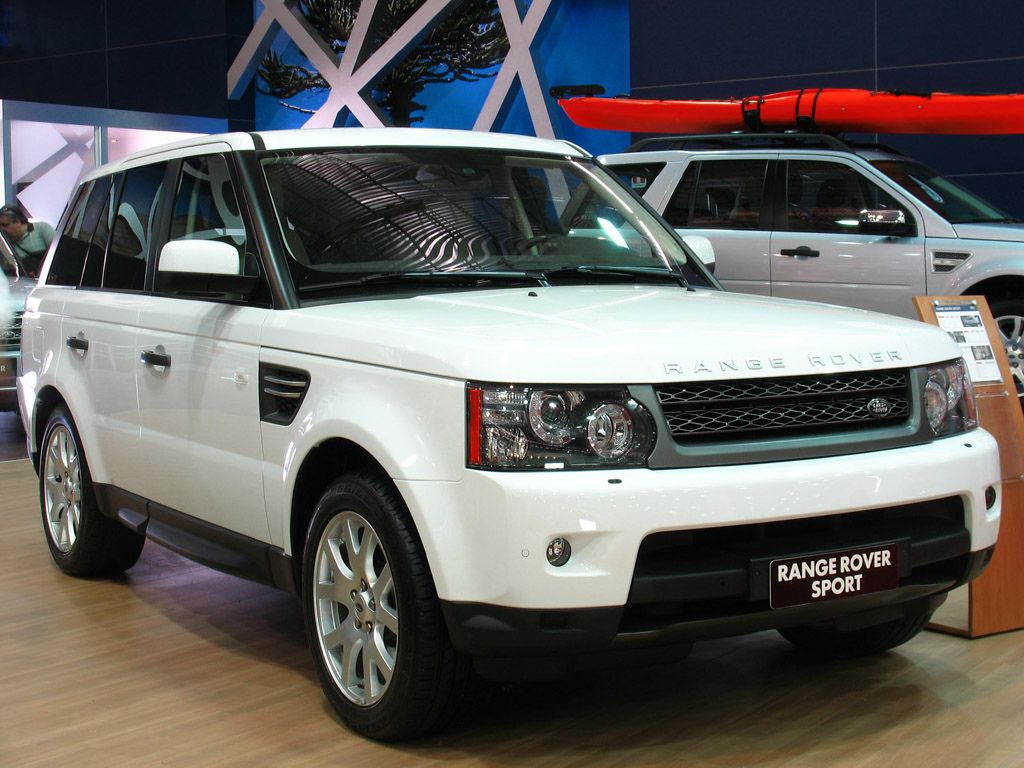
14. **Land Rover Range Rover (2012-2016)**The Land Rover Range Rover, renowned globally as a pinnacle of luxury SUVs, promises an unparalleled combination of comfort, sophistication, and formidable off-road capabilities. Models from 2012 to 2016 were expected to uphold this prestigious image.
However, for many owners, this generation unfortunately became infamous for being a veritable repair nightmare. The frequency and severity of its problems were shocking, given its premium price. Common issues included catastrophic engine failures, among the most expensive repairs.
The advanced air suspension system, designed for a smooth ride and adjustable ground clearance, was notoriously prone to breakdowns. These failures often resulted in a harsh ride, compromised handling, and incredibly expensive bills. Electrical problems also plagued these vehicles.
Furthermore, the Range Rover’s transmission and drivetrain components were susceptible to failure. Such critical issues frequently left owners stranded, facing hefty repair bills that often ran into thousands. The confluence of these pervasive and costly problems eroded trust in its long-term dependability.
As we’ve traversed the automotive landscape, examining both the unwavering titans of reliability and the unexpected troublemakers, one truth becomes crystal clear: a vehicle’s true value extends far beyond its initial showroom appeal. It’s about the countless journeys it completes without a hitch, the peace of mind it offers, and the sheer absence of unexpected, budget-busting repairs. The stories of these 14 cars – both the inspiring triumphs and the frustrating failures – offer invaluable lessons for anyone navigating the complex world of car ownership.
The models that consistently break trust, from the transmission nightmares of a Ford Explorer to the notorious electrical gremlins of a BMW 3 Series or the “strawberry milkshake of death” in a Nissan Pathfinder, serve as stark reminders that even popular brands can stumble spectacularly. These aren’t just minor inconveniences; they’re systemic issues that can lead to class-action lawsuits, erode brand loyalty, and inflict significant financial and emotional strain on drivers. They underscore the critical need for manufacturers to prioritize robust engineering and thorough testing over flashy features or rushed production schedules.
Car Model Information: 2024 Honda Civic Sport
Logo: Range Rover logo.svg
Caption: 2022 Range Rover SE P440e (L460, fifth generation, United Kingdom)
Aka: Range Rover Vogue (1981–2022),Range Rover Autobiography (1994–present)
Name: Range Rover
Manufacturer: ubl
Production: 1969–present
Assembly: Solihull
Class: Mid-size luxury car,SUV
Layout: Front-engine, four-wheel-drive layout
Sp: uk
Categories: 1980s cars, 1990s cars, 2000s cars, 2010s cars, 2020s cars
Summary: The Land Rover Range Rover, generally shortened to Range Rover, is a 4WD luxury mid to full size crossover marque and sub-brand of Jaguar Land Rover, owned by India-based Tata Motors. The Range Rover line was launched in 1970 by British Leyland and since 2022 is in its fifth generation.
Additional models have been launched under the Range Rover name, including the Range Rover Sport, Range Rover Evoque, and Range Rover Velar.
Get more information about: Range Rover
Buying a high-performing used car >>>
Brand: Land Rover Model: Range Rover
Price: $25,950 Mileage: 29,727 mi.
Ultimately, whether you’re a seasoned car enthusiast, a first-time buyer, or simply seeking a dependable ride for your daily life, the deeper dive into a vehicle’s track record is non-negotiable. It’s about looking past the gloss of marketing and diving into real-world ownership experiences and long-term reliability data. Because in the end, the car that truly serves you isn’t the one that promises the most, but the one that consistently delivers the most miles, the most memories, and the most peace of mind, without unexpectedly leaving you stranded and broke.

